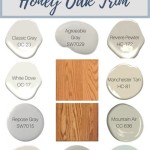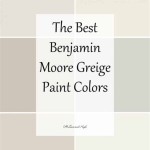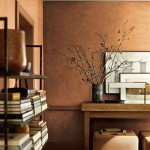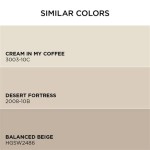What Color to Paint Timber Fence in Florida
Selecting the right color to paint a timber fence in Florida involves careful consideration of several factors. Florida's unique climate, characterized by intense sunlight, high humidity, and occasional hurricane-force winds, plays a crucial role in determining the longevity and visual appeal of any exterior paint job. Therefore, choosing a color that can withstand these elements while complementing the surrounding landscape is paramount. Factors such as the type of wood, the style of the house, and the desired aesthetic preference all contribute to the decision-making process.
Furthermore, darker colors tend to absorb more heat, which can lead to the wood expanding and contracting excessively, potentially causing warping, cracking, or peeling of the paint. Conversely, lighter colors reflect more sunlight, keeping the wood cooler and reducing the risk of damage. However, lighter colors may show dirt and mildew more readily, requiring more frequent cleaning. The decision ultimately involves balancing aesthetic preferences with the practical considerations of Florida's climate and the maintenance requirements associated with different colors.
Another key consideration involves the surrounding environment. The color of the fence should ideally complement the existing landscape, drawing attention to the property's best features. Consider the colors of the house itself, the surrounding foliage, and any nearby structures. Harmonizing the fence color with these elements can create a cohesive and visually appealing outdoor space. A poorly chosen color can clash with the surroundings, detracting from the overall aesthetic and potentially reducing the property's value.
Understanding the Impact of Florida’s Climate on Paint Color Choices
Florida's climate presents specific challenges for exterior paint. The intense UV radiation from the sun can cause colors to fade quickly, particularly darker shades. High humidity levels create an environment conducive to mold and mildew growth, which can stain and degrade the paint film. Furthermore, frequent rain and occasional hurricanes can damage the paint surface, leading to chipping, peeling, and water damage. Therefore, selecting a paint color that is resistant to fading, mold, and water damage is crucial for maintaining the fence's appearance and structural integrity over time.
Light colors, such as white, off-white, and light grays, tend to reflect more sunlight, which helps to keep the wood cooler and reduce the risk of excessive expansion and contraction. These colors are also less prone to fading compared to darker shades. However, they may show dirt and mildew more readily, requiring more frequent cleaning. Darker colors, such as deep browns, blacks, and dark greens, absorb more heat, which can accelerate the degradation of the wood and paint film. These colors are also more susceptible to fading due to prolonged exposure to sunlight. While darker colors may offer a more dramatic and sophisticated look, they generally require more frequent maintenance and may not be the most practical choice for a timber fence in Florida.
The choice of paint finish also plays a role in the fence's ability to withstand Florida's climate. A paint with a higher sheen, such as semi-gloss or gloss, tends to be more resistant to moisture and mildew, making it easier to clean. However, higher sheen paints can also highlight imperfections in the wood surface. A matte or flat finish, on the other hand, provides a more subtle and natural look but may be more susceptible to staining and mildew growth. A satin finish offers a good compromise, providing some level of sheen for moisture resistance while minimizing the visibility of imperfections.
Ultimately, the best approach is to choose a high-quality exterior paint that is specifically formulated for use in humid climates. These paints typically contain mildewcides and UV inhibitors, which help to protect the paint film from damage caused by mold, mildew, and sunlight. It is also essential to properly prepare the wood surface before painting, removing any loose paint, dirt, or mildew. A primer coat can help to improve adhesion and provide an additional layer of protection against moisture and UV radiation.
Color Psychology and Aesthetic Considerations
Beyond the practical considerations of climate resistance, the color of the fence can significantly impact the overall aesthetic appeal of the property. Color psychology suggests that different colors evoke different emotions and perceptions. Understanding these associations can help in selecting a color that aligns with the desired mood and atmosphere for the outdoor space. White, for example, often evokes feelings of cleanliness, purity, and serenity. It can also make a space feel larger and brighter. Off-white shades, such as cream or beige, provide a warmer and more inviting alternative to pure white.
Gray is a versatile color that can range from cool and modern to warm and rustic, depending on the specific shade and undertones. Light grays can create a sophisticated and understated look, while darker grays can add depth and drama. Brown is a natural and earthy color that evokes feelings of warmth, stability, and security. Different shades of brown can create a range of effects, from a cozy and rustic feel to a more refined and elegant look. Green is a color associated with nature, growth, and harmony. It can be a good choice for blending the fence with the surrounding landscape, creating a sense of tranquility and peace.
The architectural style of the house should also be considered when choosing a fence color. For example, a traditional-style home may benefit from a classic white or off-white fence, while a modern or contemporary home may look best with a gray or black fence. The surrounding landscape should also be taken into account. If the property is surrounded by lush greenery, a brown or green fence may blend seamlessly with the environment. If the property is located in a more urban setting, a gray or black fence may provide a more modern and sophisticated look.
The desired level of privacy is another factor to consider. A darker fence will visually recede into the background, making the property feel more private and secluded. A lighter fence will draw more attention and may make the property feel more open and inviting. Personal preferences should also be taken into account. Ultimately, the best color for a timber fence is the one that the homeowner finds most appealing and that best reflects their personal style.
Specific Color Recommendations for Florida Timber Fences
Given the specific challenges of Florida's climate, certain colors are generally more suitable for timber fences than others. While personal preferences will always play a role, the following recommendations offer a balanced approach that considers both aesthetics and durability. Light shades of white, off-white, and gray are often excellent choices. These colors reflect sunlight effectively, helping to keep the wood cooler and reduce the risk of warping and cracking. They also tend to be more resistant to fading than darker colors. Benjamin Moore's "White Dove" or Sherwin-Williams' "Alabaster" are popular off-white choices that provide a warm and inviting look without being too stark. For a light gray option, consider Sherwin-Williams' "Repose Gray" or Benjamin Moore's "Gray Owl," which offer a sophisticated and versatile neutral.
For those seeking a warmer and more natural look, light to medium shades of brown can be a good option. However, it is important to choose a brown color that is not too dark, as darker browns can still absorb a significant amount of heat. Consider colors like Sherwin-Williams' "Accessible Beige" or Benjamin Moore's "Revere Pewter," which offer a subtle warmth without being overly dark or intense. These colors can complement a variety of architectural styles and blend well with natural landscapes. Green can be an excellent choice for those who want the fence to blend seamlessly with the surrounding greenery. Light to medium shades of green, such as Sherwin-Williams' "Sea Salt" or Benjamin Moore's "Soft Fern," can create a peaceful and harmonious outdoor space. Avoid darker greens, which can absorb more heat and may fade more quickly.
Darker colors, such as black and deep brown, are generally not recommended for timber fences in Florida due to their tendency to absorb heat and fade quickly. However, if a darker color is desired, it is crucial to choose a high-quality paint that is specifically formulated for exterior use in humid climates and contains UV inhibitors to minimize fading. Consider a dark gray or charcoal color as a compromise, as these colors tend to be less prone to fading than pure black. Always test a small area of the fence with the chosen color before painting the entire surface to ensure that it looks as desired and that it adheres well to the wood.
Ultimately, the best color for a timber fence in Florida is the one that best balances aesthetic preferences with the practical considerations of the climate. By choosing a color that is resistant to fading, mold, and water damage, and by properly preparing the wood surface before painting, homeowners can ensure that their fence will look beautiful and last for many years to come. Regular maintenance, such as cleaning and touch-up painting, can also help to prolong the life of the paint job and keep the fence looking its best.

How To Paint A Wooden Fence Florida State

Exploring Fence Colors And Color Ideas

Fence Staining And Painting Paint

How To Paint A Wood Fence

Add Instant Curb Appeal With The Right Fence Colour Before After

Fence And Patio Trim Stain In Orlando Fl A Painters Touch

Best Colors To Paint Your Fence Highlands Ranch

Best Wood Fence Paint Colors Finishes Enhance Your Space

How To Paint A Wood Fence

Best Colors To Paint Your Fence Highlands Ranch
Related Posts








